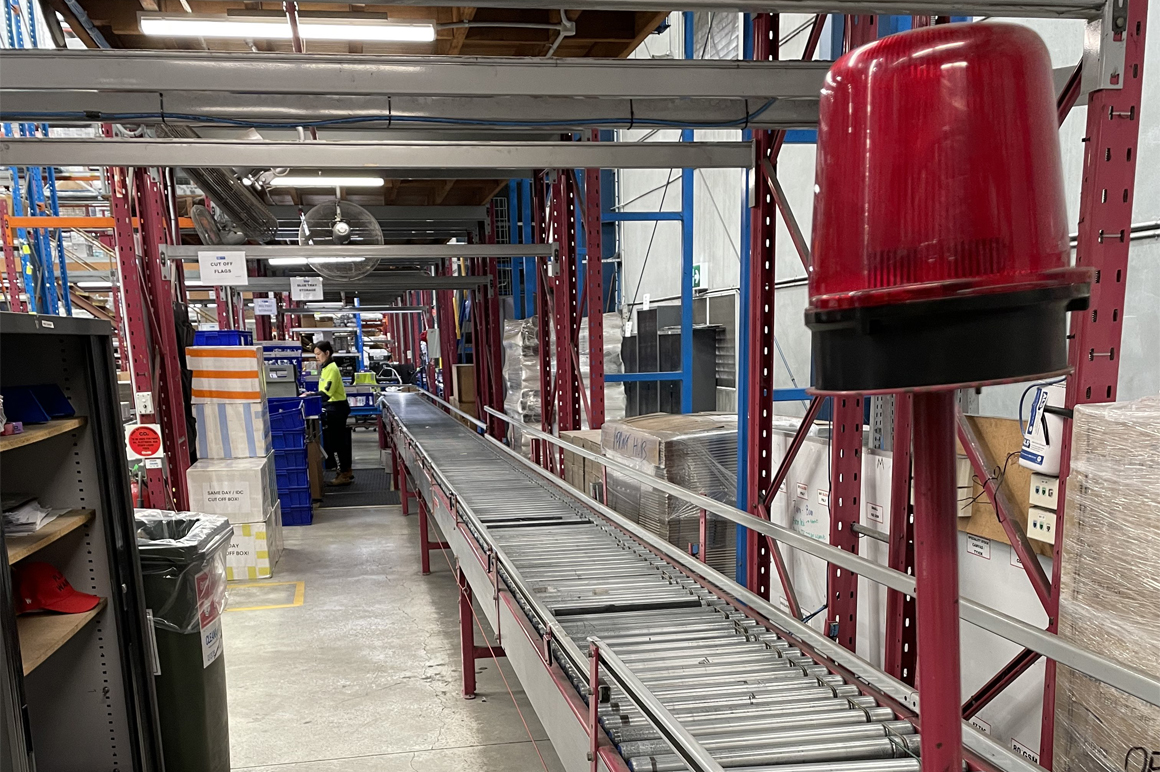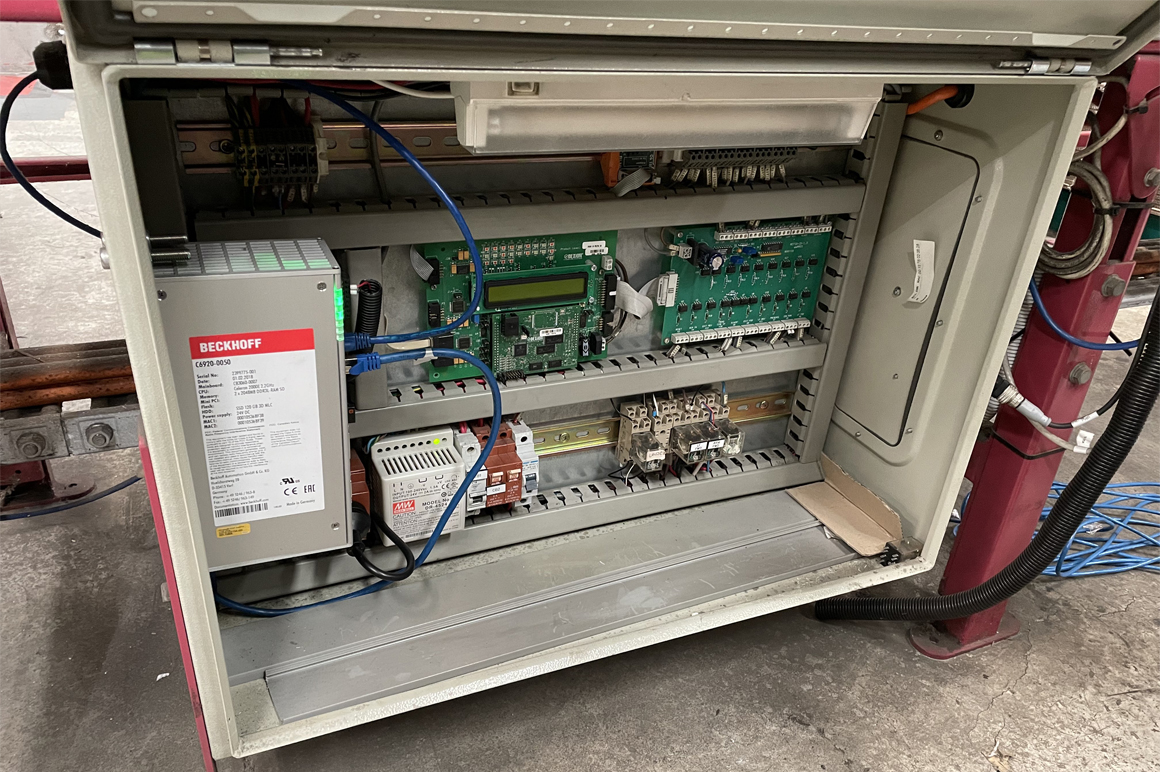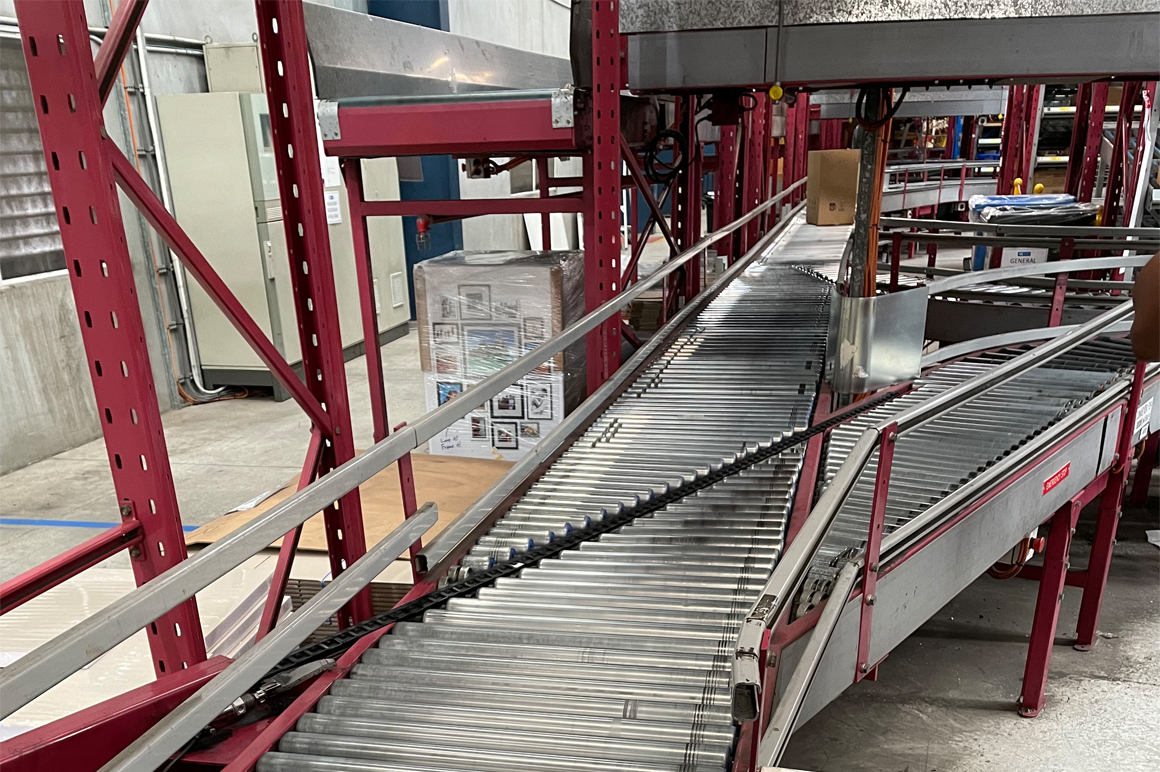Retrofit of the Conveyor Technology Control System in Central Dispatch

January 23, 2025
Open control system reduces maintenance costs and boosts future-proofing
For every online retailer, warehouse logistics is part of the critical infrastructure: If the conveyor lines come to a standstill, it generally won’t be possible for any more packages to get out. To prevent this, an Australian office equipment supplier has retrofitted the warehouse logistics installation of its central warehouse. In its role as project manager, Layer Seven Automation replaced the proprietary decentralized controllers of the conveyor lines with PC-based control from Beckhoff, based on powerful EtherCAT communication.

The end user is one of Australia’s biggest office equipment suppliers, with a broad portfolio ranging from office supplies and computers to office furniture. The company operates more than 100 stores across Australia as well as an online store with more than 40,000 products. At main distribution center, the stored goods are removed from shelves and packed into boxes, then transported along various conveyor lines – with a total length of 700 m and 28 distribution stations – and prepared for dispatch.
The conveyor lines had operated reliably for many years but it had become apparent that the systems were reaching the end of their service life. Malfunctions were occurring more and more frequently, and the required spare parts had become increasingly difficult to obtain and more expensive due to the age of the system. As a result, the management of the office equipment supplier commissioned Layer Seven Automation from Bella Vista (in the Sydney metropolitan area), which specializes in warehousing and logistics projects, to develop a concept that would modernize the warehousing system.
The evaluation revealed that the mechanics of the main conveyor belt were still in a usable state, but that the control system needed to be replaced. Lucky Thommadura, co-founder and chief engineer at Layer Seven Automation, says: “One of the disadvantages of the conveyor system was its proprietary structure. Every part had to be purchased from the manufacturer, which would have made it even more difficult to expand the system.” As a result, the decision was made to configure an open system based on off-the-shelf products. “This would offer a future-proof solution and reduce maintenance costs,” states Thommadura.

One industrial PC replaces 28 controllers
The original system configuration was based on one controller and one barcode scanner for each distribution station. Layer Seven Automation’s aim was to create a centralized control architecture that would increase the efficiency of the system and reduce costs.
The barcode scanners at each station are essential for recording the contents of the boxes. Here, Layer Seven Automation opted for scanners that can be configured via an EtherCAT interface and have integrated I/Os for simple control functions. The inputs are used to detect the boxes via opto sensors, for example, while the outputs are used to switch the switches or pushers according to the destination station.
First, a single distribution station was converted and its scanner was connected to a C6920 control cabinet Industrial PC from Beckhoff via EtherCAT. Following successful tests, all 28 stations were migrated in stages and networked with the C6920 in a linear structure (daisy chain). Lucky Thommadura comments: “The technicians of the logistics company and I were surprised by the compactness of the solution, the fast update rates of the EtherCAT network, and the overall speed of the controller.”
After all, the barcode on the box has to be scanned and forwarded to the industrial PC via EtherCAT. There, the application determines whether the switch of the corresponding station needs to be switched and sends this information back to the barcode scanner via EtherCAT. “The Beckhoff Industrial PC manages the extensive calculations in around 100 µs, which is phenomenally fast,” says Thommadura enthusiastically, “and yet we still have reserves.”
Even though there has not yet been a network failure, carelessness can quickly cause a cable break and thus a failure of the entire system. A shutdown of this kind would have a significant impact on productivity, especially in such a large-scale logistics installation. There are therefore concrete plans to implement cable redundancy, which is easy to retrofit with EtherCAT.

Engineering with IT methods
The engineering team at Layer Seven Automation has extensive experience in the general software and computing sector – for example, in setting up databases or creating web servers. Until the project, however, Lucky Thommadura and his team had not yet come into contact with the automation environment: “We knew that all of this would be new to us. But when I discovered how EtherCAT works, what an industrial PC is, and how easily we can combine Windows with a virtual PLC, it all made sense. The virtual machine in particular enabled me to test the program via a laptop from home, at work, or on site.”
The fact that TwinCAT is integrated in Visual Studio was another reason for the chief engineer to invest in Beckhoff and EtherCAT. “I really believe that this is the way automation technology needs to go – away from closed systems with Ladder Diagram programming and outdated signal processing. We need to take established software design and architecture practices and combine them with automated testing so that we can deliver our solutions more effectively,” Thommadura adds.
PC-based control: Secure, open, and flexible
According to Layer Seven Automation, a major advantage of PC-based control is that the control architecture is easy to integrate into existing IT systems. This was another pleasant surprise for Lucky Thommadura: “Many IT departments have very strict security requirements, but Windows is always easy to integrate. The firewall, security settings, and global user administration have made our work here much easier.” The option to use Windows has also enabled Layer Seven Automation to combine its own programs with TwinCAT: For example, an SQL database was integrated via TwinCAT 3 Database Server (TF6420), which archives the details of a box every time it is scanned. This action is permanently recorded and logged in the TwinCAT 3 EventLogger.
In addition, a dedicated message queue system was created, which uses the ADS protocol to extract data and ultimately link it to the RabbitMQ message broker software. “ADS technology from Beckhoff offers almost unlimited possibilities. We use ADS to collect the recorded volumes of data and distribute them both horizontally and vertically. It can also be used to easily integrate almost any MES or ERP system,” adds Thommadura.
















